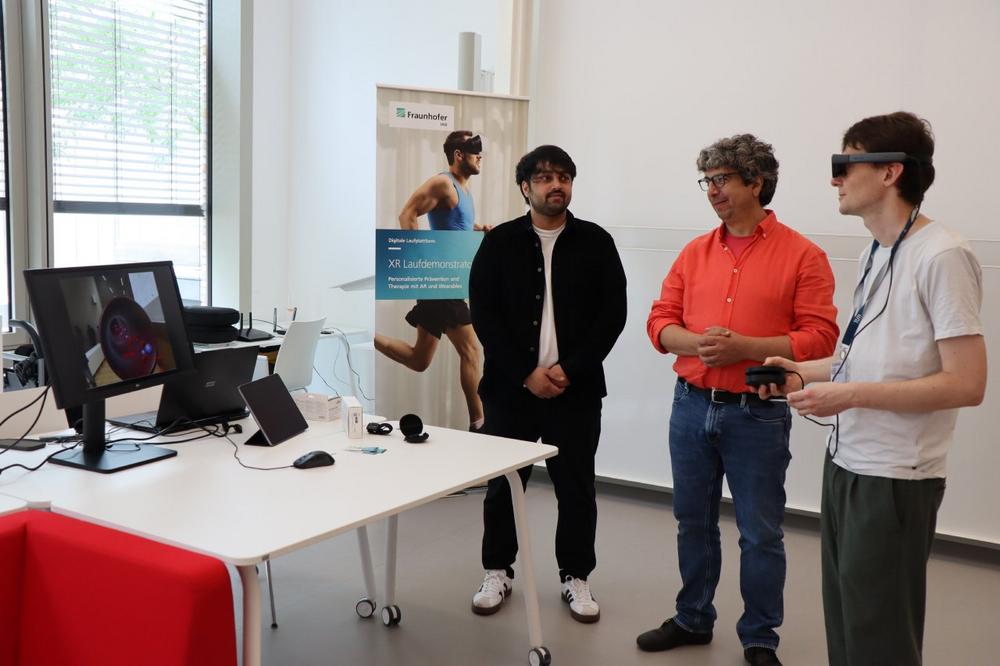Virtual Journey Through the Body

Breaking News:
Kathmandu Nepal
Montag, Dez. 22, 2025

It was initiated by Jürgen Mennel, sports therapist, ultra-marathon runner, and former vice world champion in the 100-kilometer race from Obersulm in the Heilbronn region, and is funded by Fraunhofer IAO KODIS. TUM also plays a central role: Dr. Tobias Köppl from Fraunhofer FOKUS Berlin, who taught at TUM Campus Heilbronn until 2023, is an expert in the mathematical simulation of complex blood flows. Dr. Benedikt Hoock, research assistant at the Chair of Computational Mathematics headed by Prof. Hartwig Anzt and at the Chair of Data Analytics & Statistics headed by Prof. Alexander Fraser at Campus Heilbronn, is also conducting research in this field.
Versatile Application Possibilities
The Digital Running Platform combines medicine, sports, and technology. It aims to provide information about the health benefits of running, enable research into individual health promotion through exercise, and develop suitable technologies and demonstrate their effectiveness. It also aims to connect experts and disciplines, stimulate start-ups, and help develop viable business models — and, in the long term, establish personalized training as an integral part of a sustainable and affordable healthcare system.
Jürgen Mennel explains in more detail: "Together with the Fraunhofer Institute in Erlangen, we are working on a simulator that can be used for competitions between diabetes or fatty liver patients – always with the aim of motivating patients to maintain their health. The patients would be supported by a complete team, which is expected to include a physician, a mathematician, a data scientist, and a systems biologist."
Prevention Instead of Medication
To achieve this goal, Hoock, Mennel, Giannakadis, and their colleagues are still looking for project partners — which is another reason why they are showing the simulator to the public on this day. Hoock is also presenting his research in a lecture: “Our goal is to develop mathematical models to simulate blood flow,” explains the doctor of physics. The key technology is that “neural networks can calibrate the complex flow models faster and more efficiently.”
Why is blood flow interesting in the first place? “A precise understanding of local blood flow helps improve exercise therapy for diabetics and prevent liver cancer,” explains Hoock. The basic principle always applies: “Preventing disease is much easier than curing it.”
Where Blood Pressure Measurement Reaches Its Limits
But why are mathematical models of blood circulation needed for this? Traditional blood pressure measurements have their limits, explains Hoock: They are location- and time-specific, and there are areas of the body that are difficult or impossible to access. In addition, they are often distorted and inaccurate, and depend on the condition of the person at the time of measurement. Mathematical models extend the test results by using biophysical laws to predict blood flow – even for other parts of the body and under different stress scenarios. An anatomical image of a person is used to create a network that shows only the large vessels. This is further simplified into a mathematical graph and finally represented as a biophysical model of each individual blood vessel – always with the aim of minimizing the deviations between the measurement and the mathematical results.
Neural Networks as a Milestone
In this approach, a neural network was first trained using a comprehensive data set of different simulated blood pressure curves. “We call this supervised learning,” explains Hoock. “This means that we show the neural network the input – i.e., the parameters that describe the body of a specific person – together with the corresponding simulated blood pressure curve. The neural network learns step by step the relationship between the parameters and blood pressure.” A relatively simple approach consisting of three layers, each with 32 neurons, proved to be the best setup. “Once the neural network has been trained, we use it in reverse: from a single blood pressure curve measured on the arm, it can then tell us the parameters of the body that we can use to calculate blood pressure at other locations.”
Hoock sums up the advantages of his model: “It allows us to calibrate our complex models much more quickly to the body of a specific person.” In the future, additional parameters such as heart rate could be taken into account and the value ranges used to date could be expanded. Another step would be to work with real — non-synthetic — patient data. And, of course, in the long term, the findings should not remain only in research. They should also be applied in laboratories and medical technology — for example, in the Digital Running Platform that impressed visitors on the day.
Die TUM Campus Heilbronn gGmbH
Bildungscampus 2
74076 Heilbronn
Telefon: +49 (0) 7131 264180
Telefax: +49 (7131) 645636-27
https://www.chn.tum.de/de
![]()